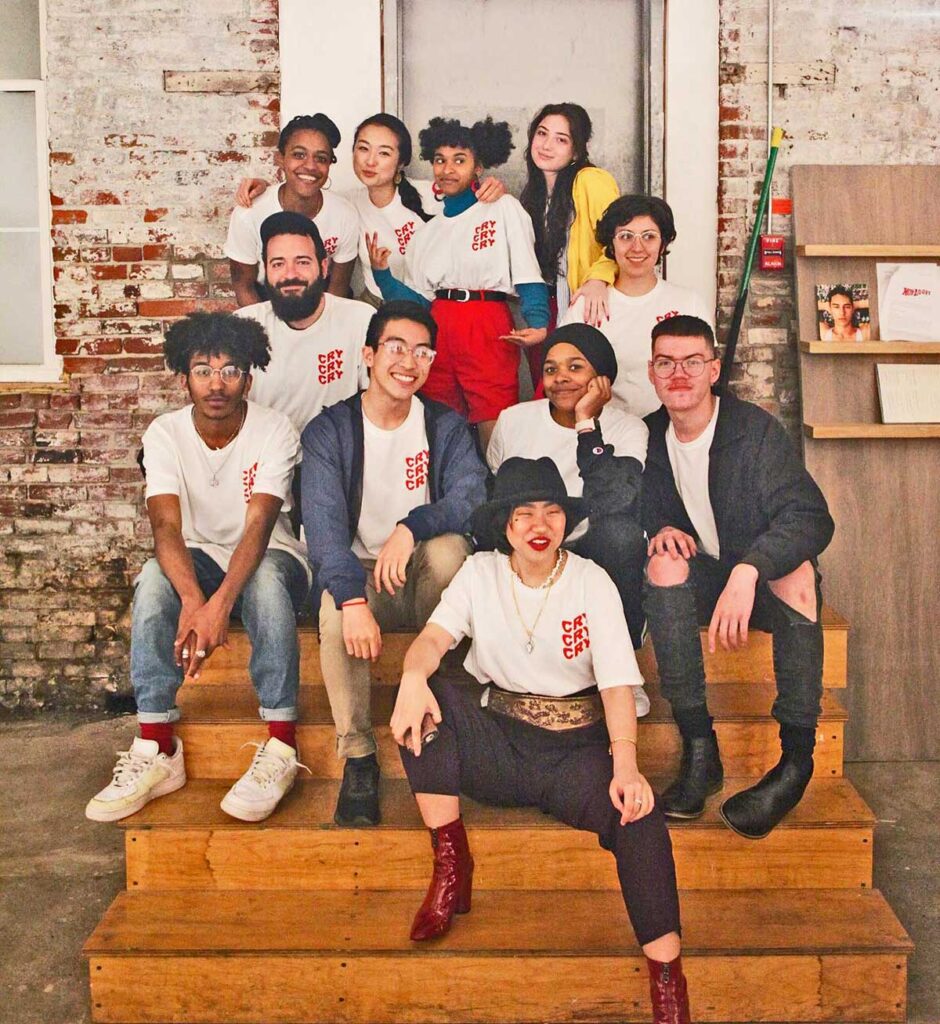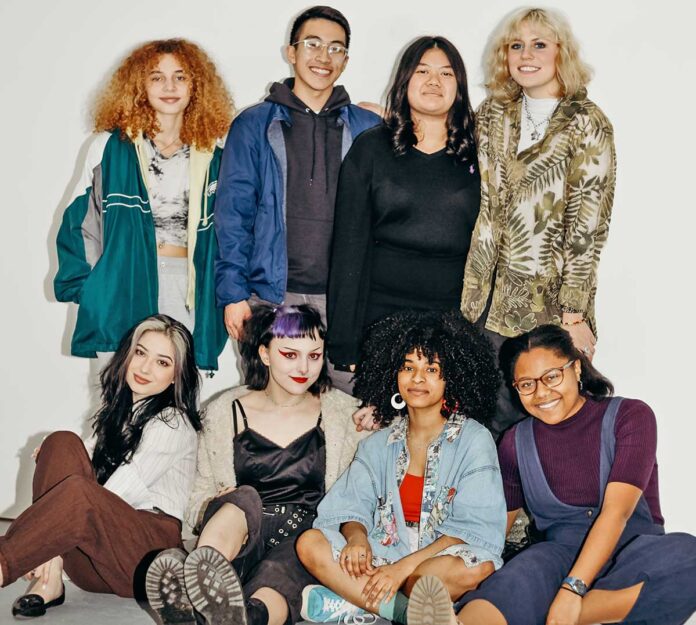The collective Creative Resilient Youth (CRY), a group of teenage and college aged people, started their podcast in May of 2020, not long after the coronavirus pandemic upended everyone’s lives. The group was already meeting in person to discuss their mental health, and they kept the momentum going virtually when safety measures kept them physically apart.
In the first episode of “The New Normal,” the group talked about taking anti-anxiety medication during quarantine.
“That’s a topic that teens don’t really have a chance to talk about,” said CRY member Andre Pak. “We wanted to have a space where teens can actually have a voice and talk about their own mental health, and inspire other youth to open up conversations about mental health.”
The CRY youth group is part of a larger collaborative called Creative Resilience Collective, which works with underserved communities and advocates who are interested in fighting stigma and boosting access to “self-determined mental health care.”
Bennett Kuhn co-founded CRY with Andrea Ngan and Michelle Delgado in 2018. Facilitator Felicia Blow came on board a few months later. Several other people are core organizers and equal-part owners of CRC, and about two dozen people serve as collaborators.
“Something that I’ve been so impressed with from the teen collective is the level of determination and ambition that they’ve had in this COVID landscape,” Blow said.
The most recent CRY cohort met roughly four times in person before the pandemic dictated that they convene virtually, which initially proved challenging in terms of comfort level.
“It’s been really exciting to see it grow in this way in the last year of being online and adapting to all these new realities rather than be stifled by that,” Blow added. “I think it’s such a testament to the drive and heart and talent and ambition that we have in this group of young folks. It makes me really proud and honored to be in this support role to them as a facilitator, to follow their lead.”
Each member of the youth collective has their own niche, but they are open to collaboration. Pak helms the podcast; Natalie Ionescu previously created a zine and is now in charge of curating a book ahead of the group’s upcoming art exhibition; Alana Mackey and Arden Allman work with the Care Fund, the group’s mutual aid initiative; and Michael Resendiz is a designer and artist.
Regarding the podcast, Mackey said, “To have a space to talk about drugs and mental health, and quarantine and everything we’re going through in COVID, it’s been a really great educational experience [and] a really incredible coping mechanism.”
Considering many members of CRY are part of the LGBTQ community, the group plans to make mental health as it relates to queerness a topic on the podcast.
“I think talking about mental health in all of our episodes of the podcast, when we say it’s a focal point, mostly we’re talking about as it intersects with other aspects of our identity and other current events,” Allman said.
According to the Trevor Project’s 2019 National Survey on LGBTQ Youth Mental Health, 71% of LGBTQ youth reported feeling sad or hopeless for at least two weeks in the previous year; and 39% of LGBTQ youth seriously thought about attempting suicide in the past year. During the pandemic, LGBTQ youth, especially transgender and gender nonbinary youth, have been particularly susceptable to suicidality, anxiety, depression and substance use due in part to a decrease in positive social interactions, the Trevor Project further reported.

The CRY team is in the process of creating a library of resources focusing on the relationship between their intersectional identities and mental health.
“It’s really important to understand not just why you’re feeling [a certain way], but who allowed that to happen, how did it happen, what systems are in place to make it worse or easier for you,” Allman added.
Not only do youth use the CRY program as a helpful resource for themselves, they give back to the community. The Care Fund, a mutual aid fund that provides mental health resources to Philadelphia youth, is one of the ways in which they accomplish that. It exists as a variety of care packages that go into the community, including self-care packages with candles and light therapy lamps. They’re also working on connecting local youth to culturally-competent healthcare providers, and hope to connect youth to psychiatric care as well.
“We’ve been meeting with a lot of different healthcare providers and seeing who can help us with this effort,” Mackey said. Some of those providers include Walnut Psychotherapy and Einstein Behavioral Health, CRY co-founder Kuhn said in an email.
As if the podcast and the Care Fund aren’t enough, CRY youth are also organizing an art exhibition in partnership with The Young Artist Program, a local after school program for high school age BIPOC LGBTQ youth and allies. The groups are hoping to hold the exhibit at the Cherry Street Pier in June 2021, but nothing is set in stone yet.
“All we’re going to do is portray our work, any type of work, it could be from artistic abilities to video production,” Resendiz said. “I’m really looking forward to it because we didn’t get to do this last year, and this year hopefully everything turns out right.”
The CRY exhibit will feature interactive work that provides social commentary in addition to aesthetic value.
“We can all say that everybody’s space will make a comment on what’s going on in the community,” Ionescu said. “It’s not just going to showcase your talent, it’s going to showcase your experience within a community, within society, within a mental health space. I think our exhibition is almost like a festival.”
Collectives like CRY are vital for the well-being of youth, Kuhn said.
“This is the bottom line for me as a facilitator — it’s good to learn from your elders, it’s better to learn from your peers and it’s best to learn from youth,” he told PGN. “Because youth are hitting all these issues head-on, they’re the first people on the floor having the experience of it, and no one else has expertise. That’s the way that we’ve tried to structure facilitation, is to allow our kids to lead the program.”
Interested listeners can subscribe and listen to “The New Normal” podcast at https://crycollective.carrd.co/. More information about Creative Resilient Youth can be found at https://creativeresco.org/Creative-Resilient-Youth.

